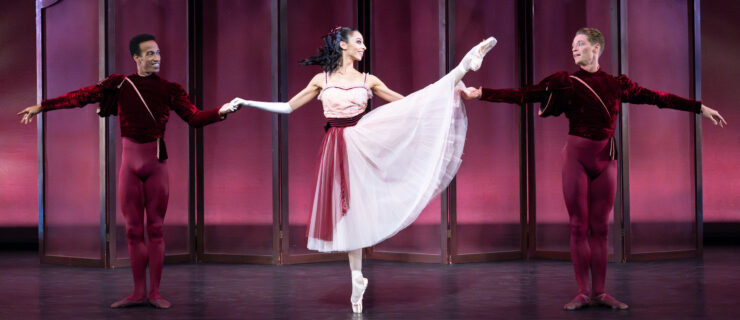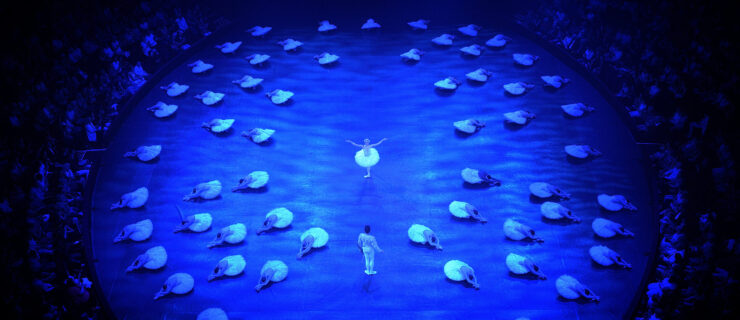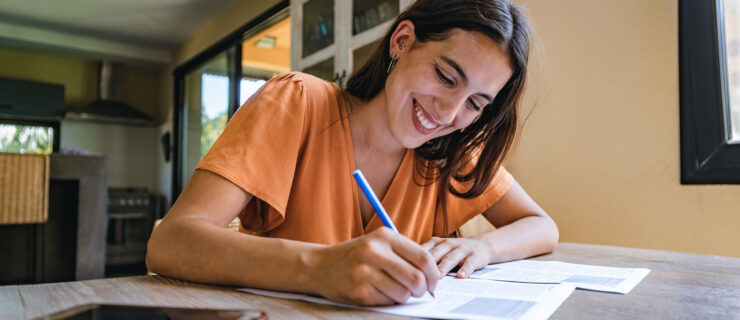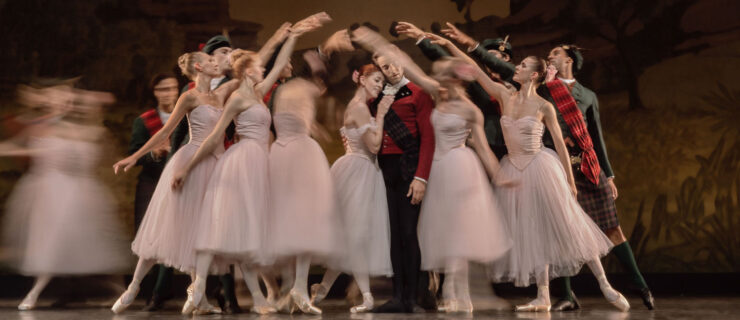Classic Beauty
No role defines classical ballet more than Aurora in Sleeping Beauty. She embodies both youthful innocence and elegant majesty. Although cursed to sleep for eternity, Aurora has an inner radiance that proves too strong for the evil spell. Prince Désiré’s saving kiss—the symbol of true love—awakens the princess from her slumber and marks her initiation into womanhood. Her Act III wedding variation conveys both her love for Désiré and her newfound maturity, and it must be danced with the technical assurance expected of royalty.
Strong Delicacy
“The character of Aurora is so sweet and pure,” says Anna-Marie Holmes, The School at Jacob’s Pillow’s ballet program director. Holmes was coached in the role by Russian greats Natalia Dudinskaya and Bronislava Nijinska, and has staged Sleeping Beauty at companies around the world. “It’s very delicate dancing, but very precise.” The variation should look light and effortless, but to achieve that, there must be substantial power behind the dancer’s movement. “You need strong technique—and a very strong center.”
Create the illusion of daintiness with Aurora’s noble épaulement and port de bras. “Hold the arms strong from the little wings in your back, and never let go of your core,” says Holmes, stressing that your arms should always transition through first position. Sleeping Beauty was originally choreographed in 1890, so the port de bras style must be unembellished to reflect that time. “This is Petipa choreography,” says Holmes. “Keep the elbows held, not collapsed.”
From Smooth to Staccato
As the variation progresses, you have to shift both your energy and the tempo. Early on, Aurora performs a series of smooth piqué arabesques traveling backward on the diagonal. The challenge is to stay in control and on your leg throughout the sequence, looking as though you could balance a glass of water on your head. “Keep your body very square with the supporting heel forward on pointe,” says Holmes. “Never let the standing leg turn in.” From the last arabesque, immediately close fifth to prepare for a series of bright sissones. While the pliés should be controlled between jumps, try not to get bogged down. “Think up and light, not down and heavy,” says Holmes.
The variation begins to accelerate toward the manége at the end. The final turns are a balancing act between speed and control. “The turns should be calm and rounded, not rushed or circusy looking,” says Holmes. “But on the développé à la secondes, the leg should get to its height immediately.” For the piqué and soutenu turns at the end, think of staying compact to avoid spinning out. “The feet should be quick—keep the turns tight and precise.”
Weightless Walks On Pointe
The series of walks on pointe, in which Aurora luxuriously pas de chevals her foot while simultaneously circling her arms and wrists, is perhaps the variation’s most memorable moment. But coordinating the arms and feet can be a bit like rubbing your stomach while patting your head. “Dancers often get very stiff here,” says Holmes. “They have to feel the movement and coordinate it.” For the upper body, Holmes stresses that the port de bras has a very specific path. “The arms come up to fifth, open and come down. You can’t just improvise any position you want. Think of very rounded and full, circular movements from below the elbow, not short and jerky.”
Below the tutu, Holmes emphasizes having a feeling of weightlessness in the feet. “When you walk on pointe, try not to slam your foot on the floor. Have a mental image of walking on eggshells or glass,” she says. “We should hear no sound.”
Find Your Inner beauty
Sleeping Beauty is a coming-of-age story. We watch Aurora grow up before our eyes, and the Act III variation should reflect her emotional development. “She grows from a sweet girl to a lovely young woman,” says Holmes. “She shouldn’t have a 16-year-old’s expression on her face anymore. She should be calm and beautiful, as if glowing on the inside.”
Aurora is now also very much in love and celebrating her wedding day. But always remember her royal background—think more aristocratic reserve than unbridled passion. “Aurora is not a peasant girl like Giselle,” says Holmes. “She is of noble birth.” Her choreography is classical ballet at its most pure.





